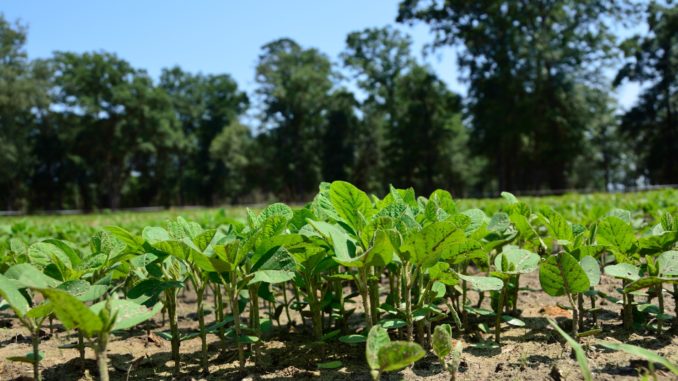
They can do plenty to improve local habitat
Spring brings big changes every year, revitalizing nature’s canvas with a sea of green. The forests and fields erupt in tender, new growth, from the tips of the trees down to the forest floor. Native grasses, fresh soft mass and nutritious forbs explode everywhere. This provides deer and other wildlife a full buffet of nutritious options to fulfill their daily nutritional requirements.
So, why should hunters and land managers spend any time and resources on warm-season food plots if nature is already providing for wildlife in more ways than one? This is an interesting question for sure with many potential answers.
To start with, nature will provide nutrition for wildlife during the spring and summer — and throughout the entire year — with bountiful opportunities in almost every type of habitat imaginable. But even though food is available, it might not always be the preferred or most-nutritious options to produce the highest-quality animals. If not overbrowsed, natural habitats can support their animals as long as the population is below carrying capacity.
Alternatively, a super-healthy deer herd that has access to above-average, nutrient-rich foods, will produce strong fawns and can help provide the necessary nutrition to grow bigger bodies and potentially bigger sets of headgear. And few hunters will complain about having big-antlered deer or carriers of prime cuts of venison walking around on their properties.
Deer flock to food plots, even when natural food is available
Food availability during the spring in most habitat types would be considered high. Few species of wildlife will suffer much during the spring green-up — if any at all. Yet when a land manager plants a 5-acre field of soybeans or when a farmer plants his fields in peanuts; deer will arrive in herds, incorporating the new food source into their daily travels until the nutrient flow withers away.
Food is important to have available year-round, not just during hunting season. Food plots should be available throughout the year to keep deer and other wildlife species feeding within the boundaries of the parcel you intend to hunt. Both warm- and cool-season food plots are important to the health of deer herds and to maximize the attractiveness of a property. The bottom line is, permanent food plots will keep deer close to a hunter’s home away from home.
Antler production drives deer to high-protein food plots
Summer food plots provide deer with high-protein sources for fueling several critical life-history mechanisms that occur in the warm season. While fall plantings have their importance in the annual nutrient budget, summer food plots provide nutrients when they are needed the most. Deer are drawn to protein-rich foods when they need to fuel antler production, lactation and nurture developing newborn fawns.
Land managers should choose palatable seeds with super-high protein levels in the 18- to 35-percent range. Most warm-season food-plot mixes with components of legumes, including soybeans, lablab, joint vetch, peas, alyce clover, ladino white clover and peanuts are loaded with highly digestible protein from 15 to 35 percent. Soybean and peanut crops are typically only recognized for their end game as a fruit or nut, but these two crops are super foods in the natural world for deer, with 35-percent digestible protein in their seeds and leaves. Hunters can plant these crops and get their deer herd aboard the energy train with ease.
The spring and summer bring many native browse species for deer to eat, but most tracts lack the abundance of native plants with the required nutrient composition during the critical time of need.
Draw in, hold deer with food
Deer will travel great distances to find food, and highly-nutritious food will pull deer off their native food sources in a flash. So regardless of how much native food is available, an alternative food source can shift deer to a higher-quality diet and can even attract them from neighboring properties and hold them until hunting season.
The single-largest contributor to deer movement is the availability of preferred foods. Deer will travel for miles to find a rich food source during any season. Food drives the movement of every species in the animal kingdom — and with good reason.
Typically, a whitetail deer’s home range is limited to one square mile: 640 acres. But deer will expand their territory when rich food sources deteriorate, when they are pushed along from an overload of unnatural disturbance or in search of suitable mates. Deer will live in much smaller locales when all of their needs are met, and a rich, year-around food source is a big part of the puzzle.
Be strategic with your planting
Strategic, warm-season plantings provide the herd with protein-rich forage that can pull deer from neighboring properties and retain them into the fall. Fortunately, spring and summer plantings play a double role. They sprout quickly, providing summer feeding, and they flourish deep into the fall, just in time for bagging a trophy.
For the best results, warm-season food plots should be large, greater than 3 acres in size, and acreages as large as 10 areas are better because they can withstand heavy browsing better than smaller food plots.
One of the best ways to create a summer-long food producer is to coordinate with a local farmer to plant peanuts and soybeans in the back section of a field or on interior fields. These larger fields can provide adequate food for local herd and pull in bucks from neighboring tracts until the deer season begins in the fall.

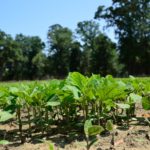
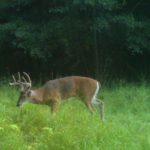
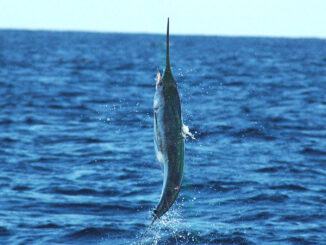

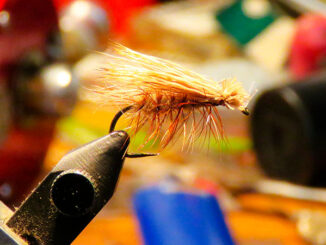

Be the first to comment